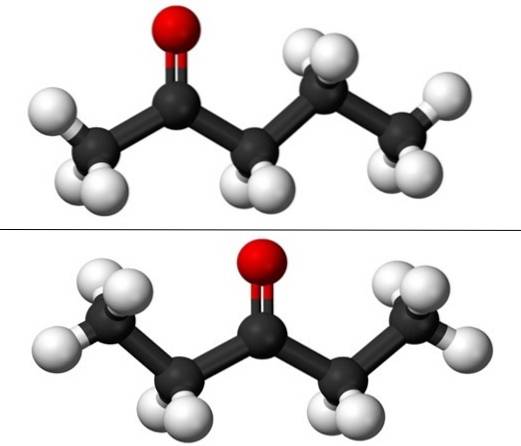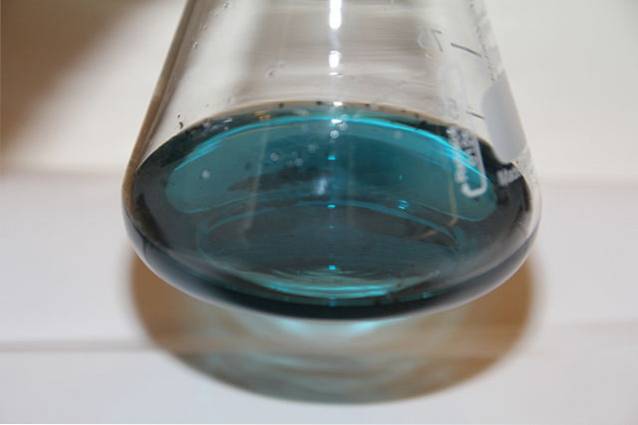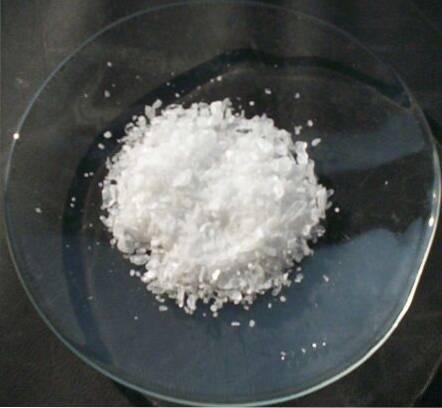
Hypobaria Causes, Symptoms and Treatment
The hypobaria It is a symptomatic picture that occurs as a result of exposure to low pressure environments typical of high places. The altitude of a mountain favors the conditions that determine this low pressure. There is a relationship between height, pressure drop and oxygen drop.
As the altitude increases, the atmospheric pressure and the partial pressure of oxygen decrease. Although the oxygen concentration in the air does not change with altitude, the partial pressure of this gas does, reducing the availability of oxygen to the body..

In the living being, the low atmospheric pressure produces hypoxia in a secondary way, causing the symptoms associated with heights. Hypoxia is a decrease in the availability of oxygen. It is difficult to establish the direct responsibility of hypobaria in the clinical manifestations without taking into account the effect of hypoxia in a living being.
There are many syndromes associated with rapid or prolonged exposure to heights. Although multiple factors such as temperature, sunlight and environmental humidity can cause symptoms, the role of hypobaria and hypoxia is decisive in the physiological changes that will result in some pathologies associated with altitude.
Article index
- 1 Causes
- 1.1 Triggering activities
- 2 Basics
- 2.1 Altitude
- 2.2 Atmospheric pressure
- 2.3 Air composition
- 2.4 Partial pressure of gases
- 2.5 Hypobaria
- 2.6 Hypoxia and hypoxemia
- 2.7 Acclimatization
- 3 Symptoms
- 3.1 Physiological changes
- 3.2 Respiratory symptoms
- 3.3 Cardiovascular symptoms
- 3.4 Neurological symptoms
- 3.5 Kidney symptoms
- 3.6 Other symptoms and disorders
- 3.7 Related diseases
- 4 Treatment
- 5 References
Causes
The main cause of hypobaria is altitude. When altitude increases, the barometric pressure of the atmosphere decreases, which affects the behavior of gases -including oxygen- by decreasing their partial pressure. Hypoxia occurs due to this change in the behavior of oxygen by hypobaria.
Triggering activities
Activities that expose humans to high altitudes will cause hypobaria. The human presence in areas above 2,500 meters above sea level triggers symptoms due to low pressure, to a greater or lesser degree. Triggering activities include the following:
- Mountain tourism or visiting high-altitude cities.
- Work activity in high altitude areas.
- Mountaineering.
- Aviation, when the cabins do not have adequate pressurization or it is accidentally lost.
Basic concepts
To understand the causes of clinical conditions caused by hypobaria, it is necessary to understand some basic concepts.
Altitude
Taking into account sea level, altitude is the elevation measure of a geographic region. Its expression is meters above sea level, or masl.
Atmospheric pressure
It is the force exerted by the air in the atmosphere on a specific point on Earth; that is, per unit area. At sea level it corresponds to 760 mmHg or 1 Atm.
Air composition
Air is a mixture of gases, corresponding to 78% nitrogen, 21% oxygen and 1% inert gases..
Partial pressure of gases
It is a physical variable based on the strength of a gas at a given concentration and temperature. Oxygen partial pressure can be measured in both air and blood.
Hypobaria
Decrease in pressure due to presence in high areas. With respect to living beings, this decrease in pressure produces physiological changes in the body in high altitude areas..
Hypoxia and hypoxemia
Hypoxia is a decrease in the concentration of oxygen. Hypoxemia is a concentration of oxygen in the blood that is below normal. Consequently, the hypoxia of a tissue or organ depends on hypoxemia.
Acclimatization
It refers to tolerance against climatic changes that influence the body. Height, with its consequences, produces physiological changes that the body compensates for to achieve balance.
Symptoms
Physiological changes
The altitude supposes a decrease of the force exerted by the air on the Earth; that is, the barometric pressure of the atmosphere will decrease. The partial pressure of gases in the air will also decrease, as will the partial pressure of oxygen, which means fewer oxygen molecules are available..
The composition of the air does not change with altitude, but the amount of air molecules present in the environment does. The low pressure of the gases and the low content of ambient oxygen will determine the presence of hypobaria and hypoxia, respectively. Ultimately, hypoxia will cause the changes in physiology responsible for the appearance of symptoms..
An altitude around 2500 meters above sea level will cause symptoms during physical activity, and from there the symptoms will also appear at rest. The clinical manifestations that appear as a consequence of hypobaria and hypoxia will mainly affect the respiratory, cardiovascular, nervous and renal systems.
Respiratory symptoms
As a consequence of hypoxia, gas exchange is affected, increasing the respiratory rate in compensation. The two symptoms associated with hypobaria are tachypnea and respiratory distress..
These symptoms are due to the fact that the body captures hypoxemia and activates mechanisms to increase the delivery of oxygen to organs and tissues..
In extreme cases, the permeability of the alveolus-capillary membrane increases, allowing the passage of fluid to the alveoli, which produces acute pulmonary edema.
This will lead to increased shortness of breath, cough, and chest pain. Severe altitude sickness may manifest with a syndrome that includes pulmonary edema..
Cardiovascular symptoms
When the body perceives the lack of oxygen, it promotes mechanisms that ensure the arrival of gas to the tissues.
The contraction of the heart becomes stronger, the pulse and blood pressure increase, manifested in tachycardia and hypertension. Only in cases where there is a predisposition will pain of cardiac origin or arrhythmias occur.
Neurological symptoms
Headache is the main symptom in response to hypobaria and hypoxia. In addition, it is very common to observe others, such as dizziness, disorientation, decreased balance, irritability and even vomiting secondary to brain irritation. Sleep disturbances, including insomnia, may be present, as may loss of appetite and weakness.
Severe altitude sickness includes acute cerebral edema, which can cause drowsiness to seizures and coma..
Kidney symptoms
The redistribution of body fluids is a consequence of hypobaric hypoxia. This is what causes edema of the limbs, lung and brain.
The consequence is a decrease in urine in quantity and frequency, called oliguria. Although it is not a frequent symptom, its presentation implies the possibility of severe altitude sickness.
Other symptoms and disorders
All tissues and organs in the body can be affected due to hypoxia. Compensatory mechanisms or acclimatization will allow its improvement:
- Muscle aches, due to metabolic processes.
- Digestive system disorders, such as abdominal pain, nausea, and vomiting.
- Easy weakness or fatigue.
- Hormonal disturbances, such as increased blood levels of these substances.
- Increased hemoglobin and red blood cells (polyglobulia).
- Metabolic disturbances, such as hyperisulinemia.
Related diseases
- Simple altitude sickness.
- Height respiratory syndrome. Acute Pulmonary Edema.
- Secondary cerebral edema at height.
- Chronic intermittent hypobaria.
Treatment
First of all, knowing the symptoms that can occur in problems related to height is of the utmost importance..
Prevention of altitude-related disease involves establishing measures to avoid or minimize symptoms and pathologies dependent on altitude, hypobaria and hypoxia..
In countries with high altitude work areas, such as Chile, Peru and Bolivia, there are labor laws that promote the prevention of accidents or occupational diseases related to hypobaria.
The symptoms and diseases caused by hypobaria and hypoxia must be identified from the clinical point of view to establish the appropriate treatment. In most cases, supportive measures and symptomatic treatment will improve the clinical picture. If symptoms do not subside, it is necessary to lower patients from elevated areas.
Specific treatment for the most serious diseases will include measures both to guarantee life and to return the organism to a balanced state. Some of the most commonly used drugs are:
- Oxygen.
- Parenteral hydration.
- Analgesics.
- Diuretics.
- Antihypertensives and antiarrhythmics.
- Steroids, such as dexamethasone and prednisone.
- Diuretics.
- Antispasmodics and antiemetics.
- Anxiolytics and sleep inducers.
References
- Wikipedia. Hypoxia. Recovered from en.wikipedia .org
- Wikipedia (s.f.). Hypobaric hypoxia. Recovered from es.wikipedia.org
- Aristasur (2017). Atmospheric pressure and oxygen variations in height. Recovered from aristasur.com
- AviationKnowledge (2009). Hypobaric hypoxia. Recovered from aviationknowledge.wikidot.com
- Savourey, G. et all (2003). Normo-and hypobaric hypoxia: are there any physiological difference ?. Recovered from link.springer.com
- Bärtsch, P., Werner, P., Herbeli, A. (2001). Hypobaric hypoxia. Recovered from thelancet.com
- Gamboa, R. (1997). Acute exposure to hypobaric hypoxia: physiological and pathophysiological aspects. Recovered from sisbib.unmsm.edu.pe
- Kale, R.M., Byrd, R (ed) (2015). Altitude-Related Disorders. Recovered from emedicine.medscape.com
- Stuart, N. (2016). Altitude illness - cerebral syndromes. Recovered from emedicine.medscape.com
- Stuart, N. (2016). Altitude illness - pulmonary syndromes. Recovered from emedicine.medscape.com
- Fiore, D.C., Hall, S., Shoja, P. (2010). Alltitude illness: risk factors, prevention, presentation, and treatment. MEDLINE abstract. Recovered from reference.medscape.com



Yet No Comments